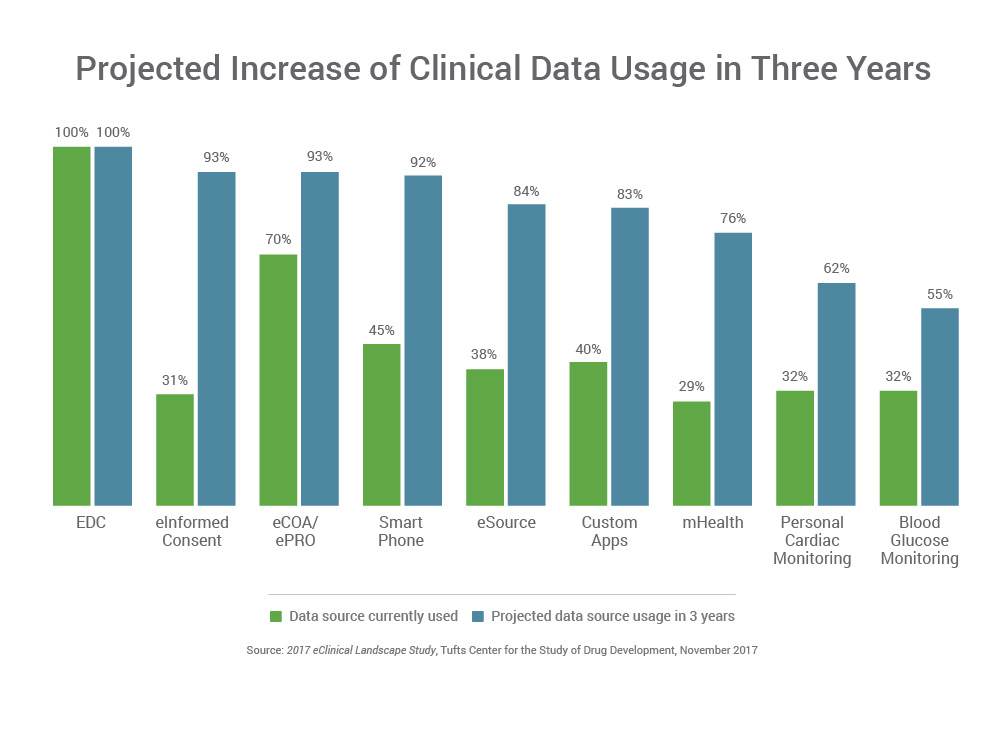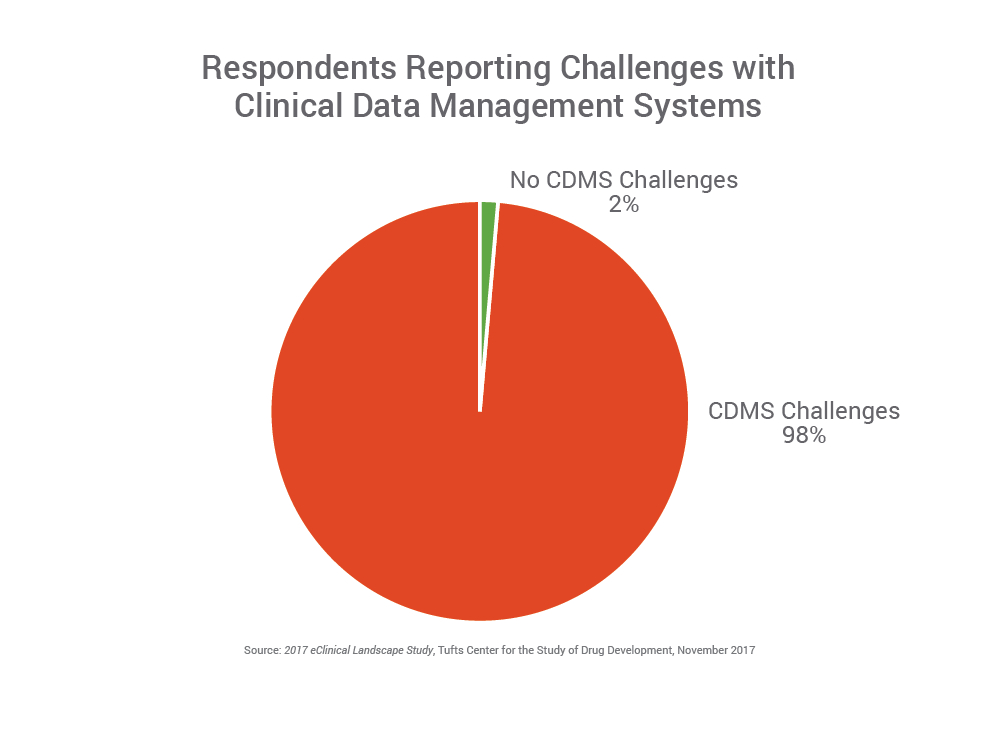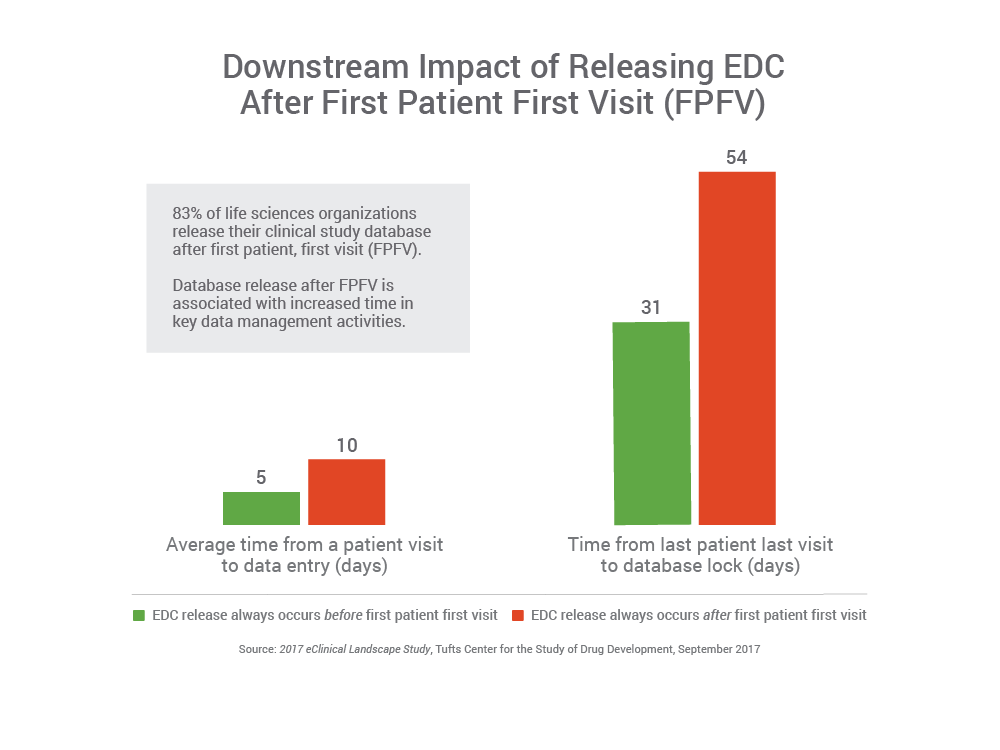97% of companies expect to use more clinical data from a wider variety of sources over the next three years, and 70% plan to use a data source in three years that they are not currently using today. However, the majority (77%) have challenges loading data into their EDC system, signaling an opportunity for companies to improve their data management processes in order to manage this data growth.
Nearly all (98%) clinical data management professionals report challenges with their clinical data management applications. When asked about their single biggest challenges, cycle time – including time from last patient, last visit (LPLV) to database lock – is the biggest challenge cited (30%). The time it takes from LPLV to database lock is approximately 36 days, which, despite efforts to shorten, is longer than it was over 15 years ago (36 days vs. 33 days).
- Scott Fisher, Ph.D., Executive Director of Emerging Therapies, Intrexon Corporation
45% of respondents say the most common cause for database build delays are protocol changes, underscoring the challenge data management professionals have in dealing with changes as they finalize the clinical trial database for the start of the trial. This highlights the need to optimize the database design process with standards and systems that support more flexible design and rapid development.
The up-front time it takes to build and release the clinical database has potentially significant impacts on downstream processes, including time to enter patient data in the EDC and time to final database lock after last patient last visit.
- If the database is released before first patient first visit (FPFV) the time to input data into the EDC is 5 days and the database lock time is 31 days.
- If the database is released after FPFV, data entry time is 10 days and time to database lock is 54 days.
— Ken Getz, Research Associate Professor and Director, Tufts Center for the Study of Drug Development








